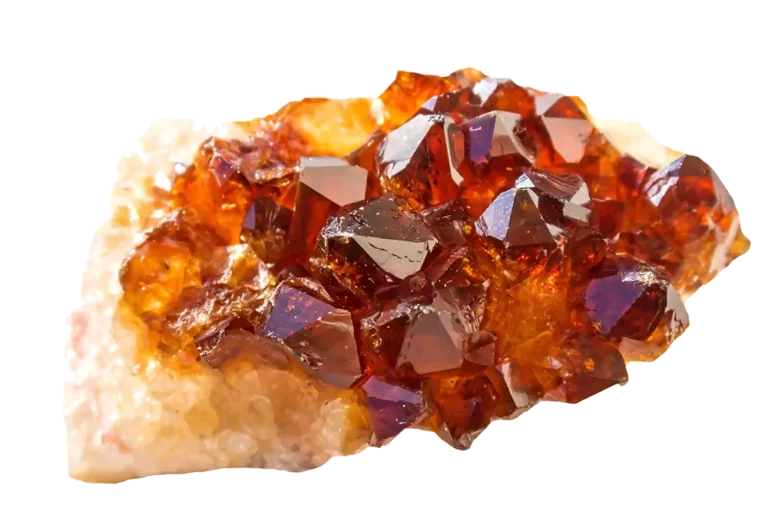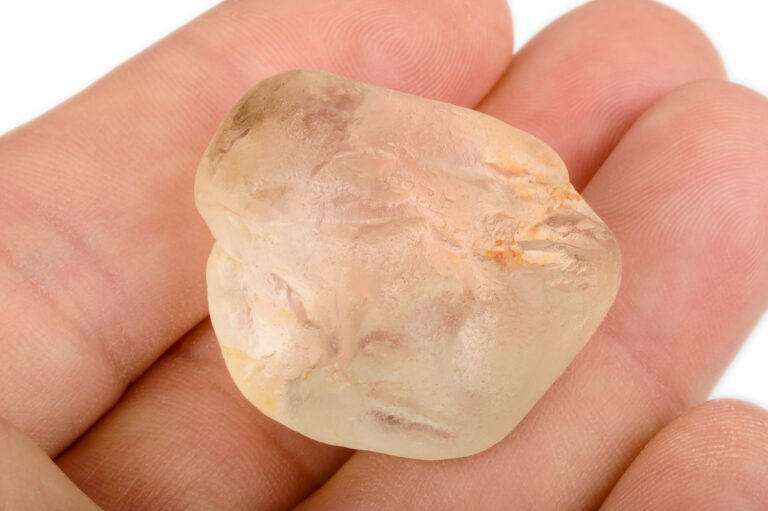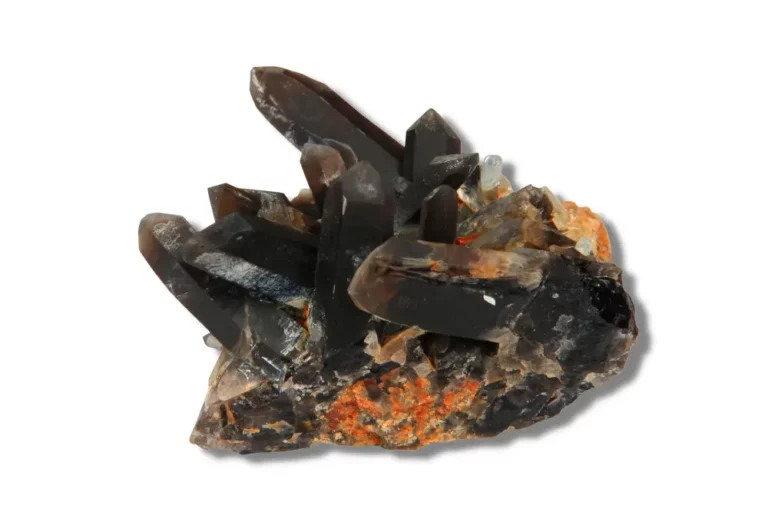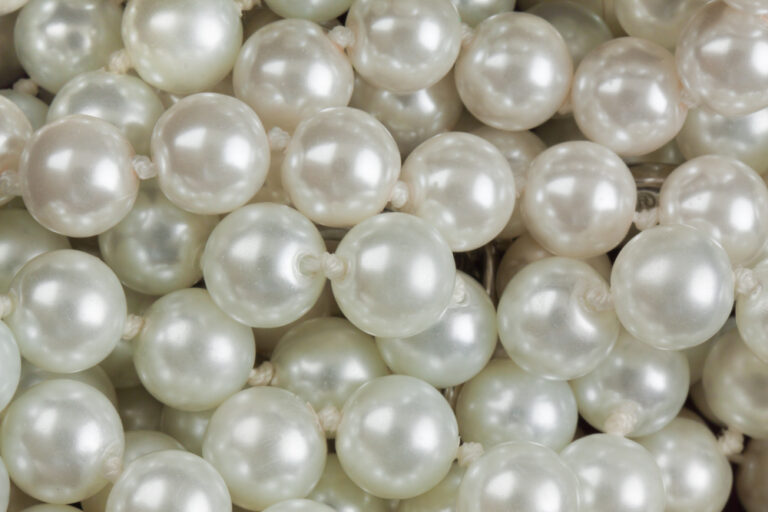Obsidian Stone: Properties, Benefits & Meanings
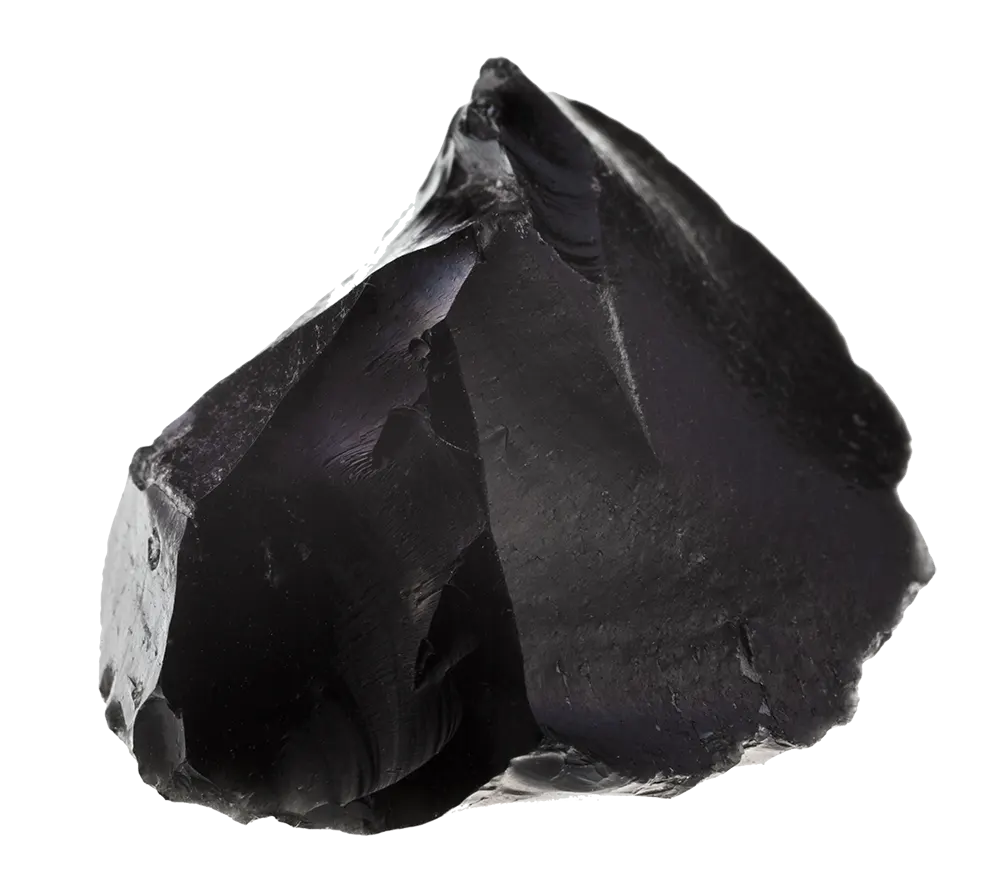
Obsidian Stone Overview
Obsidian is a beautiful black-colored gemstone used by humans for millennia. It is a stone steeped in ancient history. In fact, this stunning stone makes up a significant amount of cutting tools found in ancient historical sites.
Alongside their practical uses, Obsidian stones have long been associated with deities and magical powers by different cultures. The ancient Romans, Aztecs, Japanese, and many other cultures valued this stone for one reason or another.
This article will look into various aspects of the Obsidian stone, including its history, types, properties, and uses at different times.
What Is Obsidian Stone?
Obsidian is a beautiful black stone used in different industries, including jewelry making. It is found throughout the ancient world as an essential component of different societies.
The Obsidian stone is thought to be related to multiple chakras, but it primarily connects to the solar plexus and root chakras. This stone symbolizes safety and good luck.
Obsidian is a naturally occurring volcanic glass created by the rapid solidification of lava. The mineral has been used in jewelry and other artifacts, including mirrors and cutting tools. Obsidian stone has been used throughout human history for many purposes.
Etymology And Discovery
The earliest remaining documentation mentioning Obsidian stones is attributed to Pliny the Elder. He mentioned the discovery of black volcanic glass, which he called “lapis obsidianus” in his writings, by a roman explorer, in modern-day Ethiopia, by the name of “Obsidius.”
The stone was named after that explorer. Later, the word Obsidius morphed into Obsidianus and then into Obsidian in the 17th century.
Other Names For Obsidian
Due to its prevalence in ancient history, people have given Obsidian different names over time. Some of these are as follows:
- Bergmahogany
- Black Lava Glass
- Hyalopsite
- Isophyre
- Xaga
Obsidian Stone Appearance
Obsidian is a rare black-colored stone that forms from volcanic eruptions. It has a vitreous/glassy luster and contains multiple impurities, which can give it an interesting appearance.
The exact color of the obsidian stone depends on how it is cut. One way gives it a jet-black shade, while the other gives it a greyish look.
Various impurities can affect its appearance in different ways.
- Obsidian stones can have white-colored snowflakes spread throughout its body if it has cristobalite impurities.
- Different patterns of gas bubbles trapped inside an obsidian stone create a sheen effect on its body.
- The presence of magnetite particles can lead to a special type of Obsidian called fire obsidian which has a fire-like sheen present on the surface due to the process of thin-film interference.
- Some specimens from Mexico show a rainbow striping effect due to hedenbergite nanorods.
- Iron and other transition elements present in an Obsidian stone can give it a more brown color.
Types Of Obsidian
Based on its appearance, the Obsidian stone is divided into six main types:
- Fire Obsidian: Fire Obsidian is a rare Obsidian that displays a fire-like sheen. The presence of magnetite particles in this stone can lead to the formation of thin film interference, which causes it to have a unique appearance. This Obsidian stone is mostly found in the state of Oregon in the USA.
- Gold Sheen Obsidian: This variety of Obsidian, also called Golden Obsidian, displays a beautiful golden sheen effect that researchers believe is caused by different patterns of gas bubbles trapped inside the stone.
- Mahogany Obsidian: Mahogany Obsidian is a beautiful brown-colored variety of Obsidian stone. It gets its colors from the presence of iron impurities in its structure. You can find this stone in four states of the Us, i.e., Arizona, California, New Mexico, and Oregon.
- Cali Obsidian: This elusive stone is not very well documented. Until recently, researchers weren’t sure whether it was a variety of Obsidian. Cali Obsidian has golden spots embedded in the black body, giving it a regal and noble look. It can be found in the city of Cali in western Colombia.
- Rainbow Obsidian: As the name suggests, the Rainbow Obsidian shows a captivating rainbow striping effect. Researchers believe the presence of magnetite in the structure of the stone causes this effect. It is found in a few areas of Mexico and two states of the USA; California and Oregon.
- Snowflake Obsidian: One of the most sought-after varieties of Obsidian, this stone shows a dazzling snowflake pattern on its surface. This is caused by superheating the silica present within, creating cristobalite. You can find Snowflake Obsidian stones in the Catamarca Province of Argentina and in Oregon and Utah in the USA.
Where Can You Find Obsidian Stone?
Obsidian stone forms when lava cools down rapidly when it interacts with cold air or water and creates natural glass. Therefore, it forms near erupting volcanoes. Because it is formed by volcanic eruptions, a large amount of extrusive rock can accumulate in one single place. For example, the Obsidian Cliff in Yellowstone National Park in the USA.
The location of a deposit of Obsidian is determined by the processes responsible for its creation. Normally, volcanic eruptions create a large deposit that cools quickly. Obsidian is formed when lava flows into water and cools rapidly, causing the glassy-looking material to form on the surface of the flow before it reaches or forms a crust. Therefore, Obsidian is found in Igneous rocks.
Some of the locations where it is found are listed below:

Obsidian Stone Physical Properties
Obsidians are very brittle and have a conchoidal fracture, meaning that they break with sharp edges. Because of this property, Obsidian was historically used for making sharp objects like knives and spears.
The absence of crystal structure gives Obsidian its glassy appearance.
| Mineral Group | Volcanic Glass |
| Formula | SiO2 |
| Color | Black, Grey, Brown |
| Hardness (Mohs scale) | 5 – 6 |
| Refractive Index | 1.45 – 1.55 |
| Fracture | Conchoidal |
| Luster | Vitreous |
| Specific Gravity | 2.4 |
| Transparency | Translucent |

Obsidian Stone Value
Obsidian is an inexpensive stone found at most jewelers or gem shops. You can typically find an obsidian stone between $1-5/Ct. The value of an individual piece is determined by a few factors, which are discussed below:
- Carat: The size of the stone is a very important factor when determining its value. The larger the piece, the higher its price per carat will be. Finding larger pieces of Obsidian can also be difficult because they are less common than smaller ones.
- Cut: For inexpensive stones like Obsidian, the major cost of the stone can be attributed to the labor cost, which includes the extraction and processing of the stone. A well-cut stone will have a higher value than one that has not been cut properly. This means the facets should be symmetrical and even, with no breaks or gaps between them.
- Color: Different colors and patterns on an Obsidian stone can increase its value. Richer and more intense colors are highly valued.
How To Tell If Obsidian Stone Is Real?
Obsidian stones are not often replicated because of the low cost of buying them. However, you should still know a few things that identify the authenticity of this stone.
- Color Monotony: Obsidian is a natural stone, and as such, it has a unique color pattern. It may be a fake if you’re looking at an Obsidian stone with only one monotone color throughout the body. Genuine Obsidian has varying hues of black that change in intensity as light hits it from different angles.
- Acetone Test: If you buy an obsidian stone with an interesting pattern, you should verify whether the color is real. Dip the stone in an acetone bath for a few minutes. If the pattern comes off and dissolves in the solution, it is a fake stone.
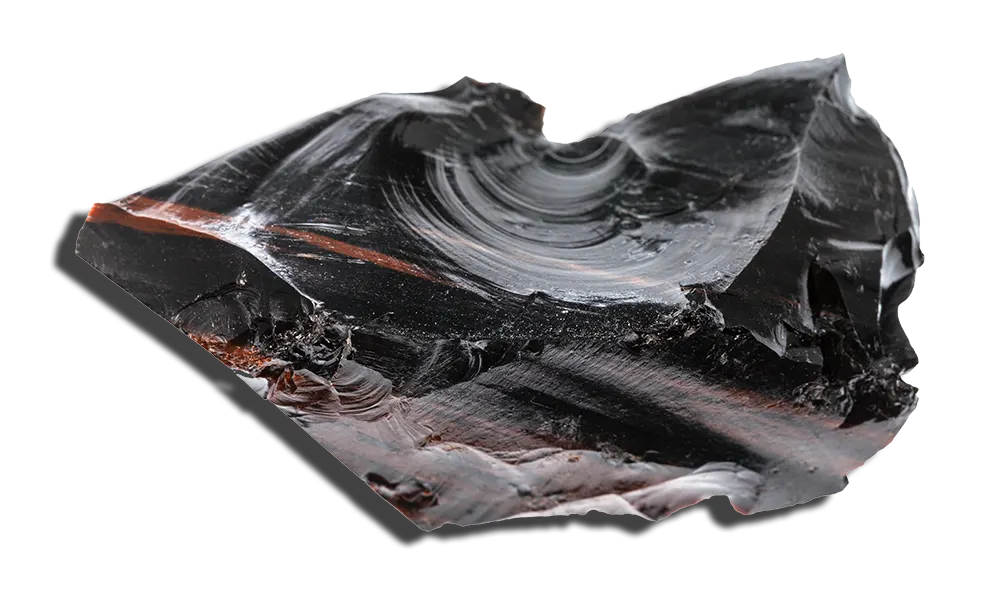
Obsidian Stone Chakra Connection
Obsidian is related to the Solar Plexus and Root Chakras. They are the third and first chakras of the human body. They are called the Manipura and Swadhisthana Chakras, respectively.
The root chakra is located below your navel and relates to your sense of safety and security. It is the foundation of your being, and it’s important to keep this chakra healthy and strong.
Obsidian can help you release fear-based emotions and thoughts that are holding you back from moving forward in life. It’s also helpful for those who have experienced trauma or abuse, as it helps them heal from these wounds.
The Solar Plexus Chakra is located above the belly button. It’s related to personal power and self-esteem. It is also known as the power chakra, and it’s essential for creating a sense of personal well-being.
When this chakra is out of balance, you may feel like you’re not good enough or that life has dealt you a bad hand. Obsidian can help restore balance to the solar plexus so that you can feel confident in yourself again.
Obsidian Stone Meaning And Uses
Modern Use
The Obsidian stone has some properties that make it relevant to this day. They are used for the following uses in the current day and age:
- They make very sharp glass blades used by veterinarians and animal scientists. Human surgeons do not use obsidian scalpels due to restrictions placed by the FDA. However, they make excellent blades because of their incredible sharpness. Even when examined under an electron microscope, the edge of obsidian blades is smooth.
- One issue with obsidian blades is their brittle nature. Since they are made from Obsidian, they are prone to breaking, making them unviable for long-term use.
- These stones are also an essential component of gramophones. They have been used to make them since the 1970s.
- Obsidian is still a popular gemstone for jewelry. It has survived the tests of time and survived as a gemstone from ancient times.
Historical Use
- Obsidian was one of the first stones to be used in tools. It breaks easily to make sharp jagged edges, making it perfect for making tools like knives and spears.
- Many Obsidian artifacts from ancient Mesopotamian society have been recovered. It is thought that they were commonplace at that time.
- The first mirrors were made from polished Obsidian glass.
- Blades and chipped tools were manufactured from Obsidian all over the ancient world, which played a role in helping humans transition from a hunter-gatherer society to an agricultural one.
- Obsidian artifacts from the Bronze age were discovered in modern-day Syria. Tracking the source of this obsidian led to the discovery of several important trade routes.
- Native Americans also used obsidian quite extensively. The Aztecs and Mesoamericans in Central America were famous for using innovative weapons made from Obsidian.
- Ancient Egyptians often traded for complex, well-made Obsidian tools. They believed that these powerful tools symbolized property, nobility, and good luck.
Metaphysical Use
- Obsidian is a stone of safety and protection. It is said to be a protective stone used to deflect negative energies and create a shield. It can also be used for psychic protection, as it helps to keep you grounded in reality. It brings about clarity of thought and action.
- This gemstone can bring you good luck. It is said to bring you great opportunities. It can also help you to achieve your goals.
- The use of this stone is said to increase self-confidence, willpower, and strength. It helps to remove fear from your life by replacing it with courage. This is why ancient Romans often wore an Obsidian pendant when going into battle.
- Obsidian is a stone of transformation and change, helping you to release old patterns and habits. It can also be used to access past lives, as well as future ones.
- It is a stone of healing and regeneration, helping you to release old wounds. It can also be used to clear and heal the chakras. Its healing property makes it very popular in crystal healing.

How To Clean Obsidian Stone Jewelry?
Preserving the beauty of your Obsidian Stone jewelry requires special care. You should wash and recharge it on a regular basis.
- Clean your jewelry by soaking it in a solution made of warm water and mild soap for a few minutes. Don’t use harsh chemicals, as they can damage the Obsidian.
- After soaking, take the jewelry out of the solution and rinse it with clean water. Use a soft toothbrush to scrub stubborn stains off your jewelry.
- You can give the crystal a final buff with a clean microfiber cloth after it has dried. Do not use cotton cloths as they tend to leave bits of lint behind on polished surfaces.
- You should use a smudge stick to cleanse the stone and prime it for future use. This will dispel the negative energy your stone has gathered over time.
- Leave your gem in direct moonlight for a few hours, preferably overnight. This will re-energize the stone and restore it to its metaphysical state.
FAQ
Which Gemstones Go Best With Obsidian Stone?
Obsidian looks best with a Blizzard stone. Specifically, Snowflake Obsidian pairs extremely well with blizzard stone due to their complementary appearances. The snowflake pattern on both of them contrasts with their different colors to create a stunning visual effect.
Obsidian can also be paired with rose quartz, moonstone, and pearls. They look best with light-colored stones like Morganite, Strawberry Quartz, or Petalite.
What Are Obsidian Stones Good For?
Obsidian stones are best known for their ability to protect the wear and bring about good luck. They shield from negative energies, repel possible accidents, and lead you to good opportunities.
Furthermore, these stones make very sharp blades that are used in short surgeries where their brittle nature is not an issue.
Who should wear black Obsidian?
These stones are for anyone who wants to be protected from all negative energies, experience good luck, and lead a happy life. They’re also great for people who are looking for opportunities in their professional or personal lives.
Feng Shui practitioners advise that elderly, young, and pregnant women shouldn’t wear this stone as its energy can be too much to handle for them.




